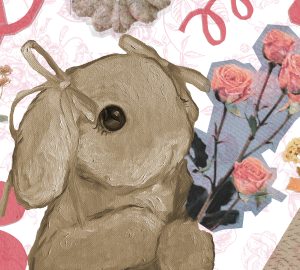Should “Niche Memes” be considered their own language?
Many of times people have posited that if time travel existed, and we could show people of the past aspects of our every day lives, many of them would be blown out of their petticoats. And the one that would surely take the most time explaining would be the art form known as the niche meme. Maybe not the pilgrims, they seemed like a nutty bunch, but surely everyone else would be lost.
But first, what is a niche meme? As explained by Urban Dictionary, they’re “highly stylized memes, particularly on Instagram,” that are “made are specific to the creators own life experiences.” Often, they resemble those starter packs that were so popular on iFunny back in the day, a curated collage of multiple components.
Despite how iconic they are, there are people on the internet now that are miffed by them. And they’re getting harder to read by the minute. Back in the day you would at least get a sentence as the heading, but the niche memers nowadays at most give you a spunky identifier like “downtown girl” and then a bunch of pictures of brown tee shirts and maxi skirts. Those who do get it almost take it for granted how to decode the memes. But the rest of the lot have to study to pick it up like it’s French 201. To the point that it’s questionable, are niche memes basically their own language?
Five Pillars of Language
Well, there actually are five things that most professionals agree are needed to make something a true language. Basically, rules that a language must consider in order to not go off the rails and become nonsense. The first is sounds, which is self-explanatory. Basically, it’s leviosa not leviosa. Next there’s lexicon. Lexicon is the words that are known by a group. It can be taken literally, but more often in conversations like this, it’s referring to sayings and phrases from certain people. Americans are great examples, because we say things like ain’t and leviosa with the wrong accents.
Next is Morphology, or the study of how each part of a word means something to that word. It’s easily mistaken as Etymology, but that is studying where words come from not what each part of the word is doing. So, if we were to diagnose the etymology for Wingardium Leviosa, we would say that Wingardium is the combination of the English words wing and arduus, and Leviosa is the combination of the Latin words levo and osa. But if we were breaking down the morphology, we would dissect the order the letters are arranged and why they were arranged in that way.

Then there is syntax, or the order we arrange words to create sentences. So, the fact that “it’s leviosa” but not “leviosa it is”. And finally, we have the semantics. That’s the number of meanings that can be taken from a word. So, we could say that leviosa is a spell, it’s a word from a popular movie, it’s something that was beaten to death in this article.
Based on the Data…
Given that, sound, morphology and syntax aren’t applicable. Lexicon and semantics still make sense. Which points to the conclusion that niche memes are less of a language and more of a script. One of the most famous examples is the usage of characters. Things like Hebrew text or ancient Japanese scrolls. But another big example is hieroglyphics, which just like niche memes uses words and images, so boom case solved. Although that doesn’t full work either. But generally, in hieroglyphics, especially Egyptian, the pictures were meant to symbolize words. Whereas niche memes have words, and the pictures are meant to relate to the words. But the words and pictures are two separate entities.
And so niche memes kind of fit into both the definition of language and script but have enough that are different about them to make it difficult to definitive claim they are one or the other. In essence they are like the people who see them regularly. Weird and directionless.


























